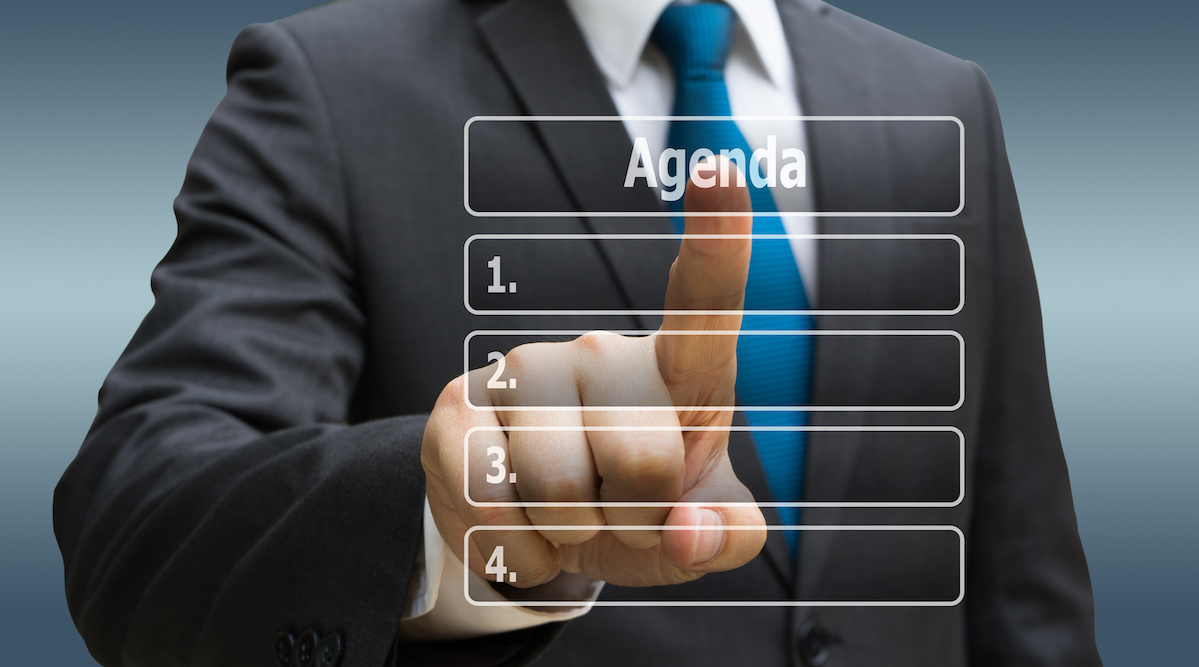
In the world of sales, your pitch deck isn’t just a presentation; it’s a make-or-break opportunity to connect, captivate, and close. As product marketers, we often find ourselves at the intersection of product development and revenue generation, serving as the linchpin that harmonizes the two. And one of the most effective ways to do this is through a well-crafted pitch deck. While the elements of a great deck can vary depending on the audience and goals, certain best practices are universally beneficial. One such best practice, often considered a ‘nice-to-have’ but arguably essential, is the inclusion of an agenda. An agenda can serve as a roadmap, setting the tone and expectations right from the start. It helps you manage time and increases engagement by allowing your audience to anticipate what’s coming next. This is especially pertinent when you consider the principles of adult learning theory, which suggest that adults are most engaged when they know what to expect and can connect the material to their own experiences or challenges. So whether you’re presenting to potential clients, internal stakeholders, or investors, an agenda adds a layer of professionalism and focus that can elevate your pitch deck from good to unforgettable.
The most successful salespeople are educators, not pitchmen.
– Jay Baer
The agenda: Not just a “nice-to-have”
Including an agenda in a pitch deck serves several important functions that improve the effectiveness of the presentation:
Structure and Overview
- Provides a roadmap: An agenda gives your audience an outline or roadmap of what to expect, helping to orient them from the start.
- Sets expectations: Knowing the agenda helps the audience gauge the scope and breadth of the presentation, setting them up for what topics you’ll cover and how deeply you’ll delve into each.
Focus and Attention
- Increases engagement: When people know what’s coming next, they’re more likely to stay engaged throughout the presentation.
- Guides attention: An agenda allows people to anticipate the sections most relevant to them, which is especially helpful in a mixed audience.
Time Management
- Efficiency: Having an agenda helps you stick to the allocated time for each section, making your presentation more streamlined.
- Flexibility: An agenda provides a framework that can be adjusted as needed, allowing for deeper dives into topics based on audience interest.
Credibility and Professionalism
- Professional tone: An agenda adds a level of professionalism, showing you’ve thoughtfully planned your content.
- Credibility: A well-structured agenda enhances your credibility, persuading your audience to take your ideas more seriously.
Facilitates Discussion and Q&A
- Eases transitions: The agenda prepares the audience to formulate questions, making Q&A or interactive discussions flow more smoothly.
- Referential: During discussion, it’s easier to refer back to agenda points as a means of revisiting or clarifying topics.
Summary and Recap
- Easier recap: An agenda enables a quick summary at the end, reinforcing key points and ensuring they stick in your audience’s minds.
The Adult Learning Perspective
As a product marketer with a background in adult education and training, I can’t stress enough the power of a well-designed pitch deck. An agenda serves as more than just a table of contents. It’s your first opportunity to grab your audience’s attention and keep it. Adult cognitive functions like memory, recall, and focus are unique and an agenda strategically aligns with these functions. This not only aids in information retention but also boosts engagement and interaction.
The best salespeople are the ones who educate their customers.
– Zig Ziglar
Memory and Recall
- Chunking information: Breaking information into manageable “chunks” helps adults retain content more effectively.
- Repetition: Seeing topics listed on the agenda before and after the presentation aids memory retention.
- Contextual cues and mental preparation: An agenda provides a framework for adults to fit new information into, making it easier to recall later.
Engagement
- Relevance and purpose: Adult learning theory tells us adults are motivated when they know why something is important. An agenda sets that stage.
- Expectation setting: Knowing what to expect helps adults focus better, leading to higher levels of engagement.
- Active participation and mental breaks: An agenda encourages a more interactive and engaging learning environment while providing mental “resets” between sections.
So, while an agenda might seem like a simple addition to a presentation, its benefits, particularly for adult audiences, are manifold. It acts as a guide, a memory aid, and a tool for increasing engagement, making it a powerful element in effective presentations. Consider incorporating an agenda the next time you craft a pitch deck—it might just be the key to a successful close.


